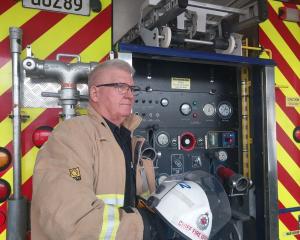
Women in the Central Otago and Queenstown Lakes districts who experienced emergencies requiring medical intervention away from birthing units were routinely being turned away due to staffing shortages.
In one case, a woman was initially refused admission to Southern District Health Board (SDHB) maternity hospitals — Dunedin’s Queen Mary and Southland in Invercargill — instead being referred to Timaru Hospital.
It required negotiation to complete the delivery in Southland with the midwife agreeing to stay on to provide secondary care.
Timaru could not be accessed by helicopter due to weather, meaning a four-hour trip by ambulance.
Central Otago midwife Charlotte Aarden said the case illustrated a clear difference in care offered during a pregnancy and postnatal period in Dunedin or Invercargill than in Central Otago and Queenstown Lakes.
"Maternity care is not equitable to women region-wide."
Population growth was not being recognised or taken seriously by the SDHB and its obstetric hospitals could not deal with demand in provision of care or beds, she said.
"We seem to have difficulty accessing a hospital when a client has an indication to deliver there.
"When there is a need for transfer, this transfer is at times declined due to lack of capacity."
This created a bind for midwives in rural or remote areas when a client was in premature labour or there were signs of foetal distress requiring a hospital but the referral was declined.
Comparing the SDHB to the Marlborough District Health Board was a good example, Mrs Aarden said.
"Marlborough’s population is 49,200, Central Otago’s is 23,100 and Queenstown Lake’s is 39,153.
"In Blenheim area, where the population is clearly much smaller and the distance to a secondary service is also less, they are able to provide a small hospital with secondary service that includes a theatre for emergency c-sections."
The proposed primary birthing units at Dunstan Hospital and in Wanaka would lead to increased access to primary care but without the back-up of a reliable appropriate secondary obstetric service should the need arise in an emergency.
"Essentially, there is no regional development in the level of care and women will remain disadvantaged in time-critical obstetric situations in comparison to women in Dunedin or Invercargill and other similar sized populations elsewhere, such as Marlborough."
Queenstown midwife Keri Mapperson described the situation as dangerous for clients and midwives alike.
The health and safety regulations which applied to other medical professionals in terms of stand down after a certain number of hours worked do not apply to midwives and that led to fatigue.
"From my experience and perspective rural midwives wish we we did have some legal limit on this, like paramedics do."
She had experienced scenarios where clients were refused at hospitals based on staffing levels, Ms Mapperson said.
The situation applied to any pregnant woman, not just those who planned to deliver their babies at full term, Ms Mapperson said.
If rural midwives were being demanded or forced to provide high risk hospital care in base hospitals in cities far away, this left rural women exposed without on-call care, day or night.
SDHB director of midwifery Heather LaDell said the SDHB, like many other parts of New Zealand, had been experiencing a shortage of midwives in its workforce.
"We are working to address our urgent midwifery shortages, and have now recruited into nearly all our vacancies on the Dunedin site, which will improve our ability to cope with almost all situations within our district."
While it was unusual for a patient to be directed to Timaru Hospital, the SDHB’s priority needed to be ensuring the mother and baby could receive the care they needed.
"We are very grateful for our relationships with other DHBs who we are able to call upon for support for our people and we appreciate the efforts of the district’s LMC [lead maternity carer] midwives for supporting women in these situations."












